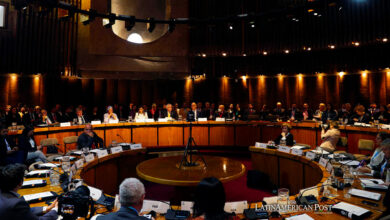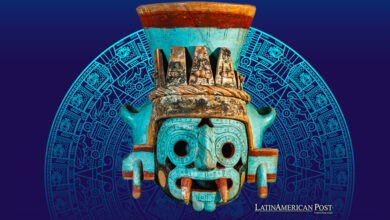Seven documentaries that show the social problems of Latin America
In this selection, you will be able to visit and learn about part of the problems that have afflicted different Latin American countries in recent years .

These creators have been given the task of investigating, portraying characters and moments, and keeping the memory of the events that -today- are reshaping the panorama of our continent. Photo: YT-Once Upon a Time in Venezuela
LatinAmerican Post | Theoscar Mogollón González
Escucha este artículo
Leer en español: Siete documentales que muestran los problemas sociales de Latinoamérica
If there is something that the Latin American countries have in common, it is their social problems, scenarios that have not been alien to different directors and producers who, from their trenches, take positions and do the impossible to reflect it through documentaries. These creators have been given the task of investigating, portraying characters and moments, and keeping the memory of the events that -today- are reshaping the panorama of our continent.
In the middle of 2021, the pressure on the streets of the different countries of Latin America is acquiring new nuances despite the fact that we continue in times of pandemics, only that these claims -mostly- come from years ago. On this occasion, we have prepared a selection of seven documentaries that portray processes of citizen pressure, street mobilization, social protest, and the struggle of historically marginalized populations that have crossed borders thanks to the fervent struggle of a people who cry out for a more just social reality.
Chile en llamas
This short documentary explains the main causes of the social mobilizations that occurred in Chile in October 2019, after a large group of students opened the subway turnstiles in the face of a new rate increase, the fourth in two years. This situation led the government to deploy several police forces to violently repress the protests, something that resulted in several deaths and hundreds of injuries.
Once upon a time in Venezuela
This is one of the many portraits of corruption and neglect that Venezuelans suffer from everyitme. The story centers on Congo Mirador, a floating town a short distance from Lake Maracaibo whose life until not long ago was attractive and bohemian. It is currently affected by corruption and climate change that causes its inhabitants to abandon the population so as not to rot amidst so much pollution and government negligence. This day to day is told by two women who are the faithful reflection of a divided country.
Ayotzinapa: El paso de la tortuga
The forced disappearance of 43 students from the Ayotzinapa Rural Normal school generated a wave of protests throughout Mexico during 2014. This documentary gathers testimonies from the people who have been involved in the investigations, whose voices are not only articulated from the information but from the affection and recognition of the manifestations as a meeting point in which societies express and acknowledge their discomfort. To date, efforts to clarify these events continue.
Also read: Social protest in the cinema: how has it been represented?
Los archivos de la abuela
This is an exhaustive work to relate in great detail the capitalization of Yacimiento Petroliferos Fiscales Bolivianos (YPFB) during the first government of Gonzalo Sánchez in 1995 until 2006 when President Evo Morales decreed its nationalization. This documentary by Marcia Morales Olivera and Luis Guaraní, incorporates anecdotes, testimonies, analysis and comments from the officials involved in the process as well as the opinions of the residents.
Que sea ley
Every day a woman dies in Argentina due to clandestine abortions, a very hard fact that has been lived with for years. This documentary, awarded at the San Sebastian Festival in 2019, tells of the arduous struggle to end this problem. 2018 was a year of protests and demonstrations in Argentina where a legal abortion bill was debated that divided the country. The decisive battle is reflected here, with testimonies from victims and women who led this fight that ended with a victory.
Ciro y yo
The filmmaker Miguel Salazar captured in this documentary the history of the Colombian conflict through the eyes of a person who has been a victim of all sides: Ciro Galindo. The life of this peasant and his family has been inexorably linked to violence in the country, something that has forced him to flee for almost six decades. Here the armed conflict can be understood from below, from its effect on the rural areas of Colombia, showing the causes that led millions of people to be forcibly displaced from their territories.
Hija de la Laguna
Rural communities in Latin America have continued to fight for the defense of water, territory and the rights of Mother Earth. This documentary from Peru shows us Nélida Ayay, a Cajamarca peasant woman who defends the Conga lagoon from a mining project that puts the region's environmental balance at risk due to the excessive gold rush. This story also questions how the neoliberal economic model leads nature to excessive exploitation, the devastating effects of which generate many losses for the most deprived.





